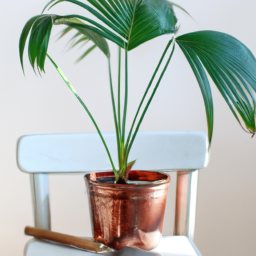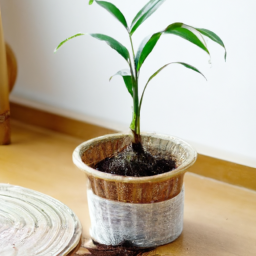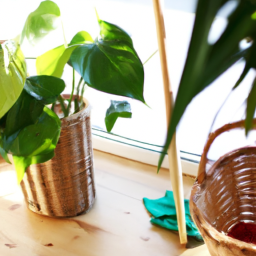
Hey there plant lovers! Are you ready to dive into the wonderful world of indoor plants care? Whether you’re a seasoned green thumb or just starting out, this blog post is here to guide you on how to keep your indoor plants thriving and happy. We all know that indoor plants have the power to transform any space into a lush and vibrant oasis, but taking care of them can sometimes be a bit tricky. Fear not, because we’ve got you covered! In this post, we’ll share some valuable tips, tricks, and expert advice on how to provide the best care for your indoor plants, ensuring they flourish and bring life to your home or office. So, grab a cup of coffee, get comfortable, and let’s get started on this exciting journey of indoor plants care!
Importance of Proper Lighting for Indoor Plants Care
Indoor plants are a great addition to any home or office space. They not only enhance the aesthetic appeal of the environment but also provide numerous health benefits. However, to ensure their growth and well-being, proper lighting is crucial. In this article, we will delve into the importance of proper lighting for indoor plants care and provide you with a step-by-step guide to help you maintain healthy and thriving indoor plants.
Why is Proper Lighting Important?
Light is the primary source of energy for plants through a process called photosynthesis. It is the process by which plants convert light energy into chemical energy, which is then used to fuel their growth and development. Without adequate light, indoor plants may struggle to thrive and may exhibit various issues such as stunted growth, yellowing leaves, and even death.
Proper lighting not only provides the energy needed for photosynthesis but also affects the overall health and appearance of indoor plants. The right amount and quality of light can influence factors such as leaf color, leaf size, stem length, and flowering. Different plants have different light requirements, and understanding these requirements is essential for successful indoor plants care.
Now, let’s explore some key factors to consider when it comes to providing proper lighting for your indoor plants:
1. Intensity of Light
The intensity of light refers to the brightness or amount of light reaching the plants. It is measured in foot-candles or lux. Different plants have different light intensity requirements. Low light plants, such as snake plants and pothos, can thrive in areas with low to medium light intensity, around 50-250 foot-candles. On the other hand, high light plants, like succulents and cacti, require intense light, ranging from 1000-2000 foot-candles.
To determine the light intensity in a specific area, you can use a light meter or refer to the plant’s care instructions. Adjusting the distance between the light source and the plant or using artificial lighting options like grow lights can help you meet the desired light intensity for your indoor plants.
It’s important to note that too much light can also harm plants, causing leaf burn or excessive drying. Finding the right balance is key to ensuring optimal growth and health.
2. Duration of Light
The duration of light refers to the number of hours of light exposure plants receive in a day. It plays a crucial role in the growth and development of indoor plants. Most indoor plants require around 12-16 hours of light exposure per day. However, some plants, such as those native to tropical regions, may require longer durations of light exposure.
Creating a consistent light schedule is essential for indoor plants care. You can use timers or set specific timings to ensure your plants receive the required duration of light exposure. Avoid sudden changes in light duration, as it can cause stress to the plants and disrupt their growth cycle.
Keep in mind that plants also need a period of darkness for proper rest and rejuvenation. Providing them with a consistent light-dark cycle mimics their natural environment and promotes healthy growth.
3. Quality of Light
The quality of light refers to the spectrum or color of light that plants receive. Sunlight consists of a full spectrum of colors, including red, blue, green, and others. Each color has a different impact on plant growth and development.
For most indoor plants, a balance of warm (red) and cool (blue) light is essential. Warm light promotes flowering and fruiting, while cool light encourages leafy growth. You can achieve the desired light quality by using a combination of natural sunlight and artificial lighting options like LED grow lights.
It’s important to note that different stages of plant growth require different light qualities. For instance, during the vegetative stage, plants benefit from higher amounts of blue light, while during the flowering stage, they require more red light. Adjusting the light quality based on the growth stage can significantly impact the overall health and productivity of your indoor plants.
In conclusion, proper lighting is vital for the care and well-being of indoor plants. Understanding the intensity, duration, and quality of light required by your plants is essential for their growth and overall health. By providing the right lighting conditions, you can ensure that your indoor plants thrive and bring beauty and freshness to your living or working space.

Essential Tips for Watering Indoor Plants
Indoor plants can bring life and beauty to any space, but proper care is essential to ensure their health and longevity. One crucial aspect of indoor plant care is watering. While it may seem like a simple task, many plant owners struggle to find the right balance. In this guide, we will provide you with essential tips for watering indoor plants to help you keep your green friends happy and thriving.
Understanding the Watering Needs of Indoor Plants
Before diving into the specifics of watering indoor plants, it is important to understand their unique needs. Unlike outdoor plants, indoor plants rely on us to provide them with the right amount of water. The key is to strike a balance between underwatering and overwatering, as both can be detrimental to their health.
Each plant has different watering requirements, influenced by factors such as species, size, potting mix, and environmental conditions. As a general rule, most indoor plants prefer slightly moist soil, but not overly saturated. It is crucial to observe your plants closely and adjust your watering routine accordingly.
Now, let’s explore some essential tips to help you water your indoor plants effectively:
1. Check the Moisture Level
Before watering your indoor plants, always check the moisture level of the soil. Stick your finger about an inch deep into the soil to assess its dryness. If it feels dry at that depth, it’s time to water. However, if it still feels moist, hold off on watering for a few more days. Remember, overwatering is one of the most common mistakes made by plant owners, so it’s better to err on the side of caution.
2. Choose the Right Watering Technique
The way you water your indoor plants can greatly impact their health. Avoid pouring water directly onto the leaves or stems, as this can lead to rot and disease. Instead, aim to water the soil directly at the base of the plant. A gentle and controlled stream of water will allow it to soak into the soil and reach the roots.
3. Use the Right Amount of Water
One of the most challenging aspects of watering indoor plants is determining the right amount of water to use. As a general guideline, water your plants until you see water escaping through the drainage holes at the bottom of the pot. This ensures that the entire root system is adequately hydrated. However, be cautious not to let your plants sit in standing water, as this can lead to root rot.
4. Consider the Seasonal Changes
The watering needs of indoor plants can vary depending on the season. During the warmer months, plants tend to dry out faster, so you may need to water them more frequently. Conversely, in the colder months, plants go into a dormant phase and require less water. It is crucial to adapt your watering routine accordingly to prevent over or underwatering.
5. Observe and Adjust
Every indoor plant is unique, and it is important to observe and learn from them. Pay attention to signs of underwatering or overwatering, such as wilting leaves, yellowing foliage, or a foul smell. Adjust your watering routine based on your plant’s response and the moisture level of the soil. Remember, it’s a learning process, and with time, you’ll become more confident in meeting your plant’s needs.
By following these essential tips for watering indoor plants, you can ensure that your green companions thrive and bring joy to your indoor space. Remember to strike a balance, adapt to seasonal changes, and always observe your plants closely. With proper watering, your indoor plants will flourish and reward you with their beauty and vibrancy.

Common Mistakes to Avoid in Indoor Plants Care
Indoor plants can bring life and beauty to any space, but they require proper care to thrive. Unfortunately, many people make common mistakes that can hinder the growth and health of their indoor plants. In this article, we will discuss three common mistakes to avoid in indoor plants care, so you can ensure your plants flourish and add vibrancy to your home or office.
1. Overwatering
One of the most common mistakes indoor plant owners make is overwatering. While it’s important to provide enough water for your plants, overwatering can lead to root rot and other issues. To avoid this mistake, it’s crucial to understand the specific watering needs of each plant you own.
Before watering your indoor plants, check the soil moisture level by inserting your finger about an inch deep into the soil. If it feels dry, it’s time to water. However, if the soil is still moist, hold off on watering for a few more days. Remember, different plants have different water requirements, so it’s essential to research and understand the needs of each plant.
Additionally, make sure your pots have proper drainage holes to prevent water from pooling at the bottom. Excess water can lead to root rot and suffocate the roots, so it’s crucial to provide adequate drainage for your indoor plants.
2. Lack of Sufficient Light
Another common mistake in indoor plant care is not providing enough light. Plants need light to perform photosynthesis, which is essential for their growth and development. Without sufficient light, your indoor plants may become weak, leggy, and have pale leaves.
When placing your indoor plants, consider their light requirements. Some plants thrive in bright, direct sunlight, while others prefer indirect or low light conditions. Place your plants near windows or in well-lit areas of your home or office, ensuring they receive the appropriate amount of light for their specific needs.
If you have limited natural light in your space, you can supplement it with artificial grow lights. LED grow lights are energy-efficient and provide the necessary light spectrum for plant growth. Position the lights at an appropriate distance from your plants, following the manufacturer’s recommendations.
3. Neglecting Proper Humidity
Indoor environments tend to have lower humidity levels, especially during the winter months when heating systems are in use. Neglecting proper humidity can be detrimental to your indoor plants, as many houseplants thrive in higher humidity conditions.
To increase humidity around your plants, you can use a humidifier, place a tray of water near them, or group plants together. Misting the leaves of your plants with water can also help increase humidity temporarily. However, be cautious not to mist plants that are prone to fungal diseases, as excess moisture can promote their growth.
Monitoring the humidity levels in your home or office is essential for the overall health of your indoor plants. Invest in a hygrometer to measure the humidity and adjust accordingly to meet the needs of your plants.
In conclusion, avoiding common mistakes in indoor plants care is crucial for their well-being. By understanding proper watering techniques, providing sufficient light, and maintaining proper humidity levels, you can ensure your indoor plants thrive and bring beauty to your space. Remember to research the specific needs of each plant you own and tailor your care routine accordingly. Happy indoor gardening!
Let’s recap
Indoor plants are a beautiful addition to any home, bringing a touch of nature and a breath of fresh air into our living spaces. However, caring for these green companions can sometimes be a daunting task. From choosing the right plants to providing them with the ideal conditions, it’s essential to understand the basics of indoor plant care.
First and foremost, selecting the right plants for your home is crucial. Consider the lighting conditions in each room and choose plants accordingly. Low-light plants like pothos and snake plants are perfect for dimly lit areas, while succulents and cacti thrive in bright, sunny spots. Once you’ve chosen your plants, it’s essential to understand their watering needs. Overwatering is a common mistake, so make sure to check the soil moisture before reaching for that watering can. Each plant has different water requirements, so it’s best to research and learn about your specific plants’ needs. Additionally, regular fertilization and occasional pruning will help your indoor plants thrive and maintain their shape. Remember to keep an eye out for pests as well, as they can quickly spread and damage your beloved greenery. With a little love and attention, your indoor plants will flourish, bringing life and beauty to your home.
Frequently Asked Questions (FAQ):
Q1: How often should I water my indoor plants?
A1: The frequency of watering your indoor plants depends on various factors such as the type of plant, its size, and the environmental conditions. As a general rule, it’s best to water your plants when the top inch of soil feels dry to the touch. Overwatering can lead to root rot, so it’s important to strike a balance and avoid letting the soil become too soggy.
Q2: What kind of light do indoor plants need?
A2: Most indoor plants thrive in bright, indirect light. Place them near a window where they can receive filtered sunlight throughout the day. However, it’s important to note that different plants have different light requirements. Some plants, like succulents, prefer direct sunlight, while others, like ferns, thrive in low-light conditions. It’s best to research the specific light needs of your indoor plants to ensure they receive the right amount of light for optimal growth.
Q3: How do I prevent my indoor plants from getting pests?
A3: Keeping your indoor plants pest-free requires a few preventive measures. Firstly, regularly inspect your plants for any signs of pests such as tiny insects, webs, or yellowing leaves. If you spot any pests, isolate the affected plant to prevent the infestation from spreading. Additionally, ensure good air circulation around your plants and avoid overwatering, as stagnant moisture can attract pests. Lastly, consider using natural pest control methods like neem oil or insecticidal soap to treat any infestations that may occur.
Q4: Can I use regular potting soil for my indoor plants?
A4: While regular potting soil can work for some indoor plants, it’s generally recommended to use a well-draining potting mix specifically formulated for indoor plants. These mixes usually contain a combination of peat moss, perlite, and vermiculite, which provide adequate moisture retention and aeration for the plants’ roots. Regular potting soil may be too heavy and compact, leading to poor drainage and potential root rot. Opting for a specialized indoor plant potting mix will ensure your plants have the best chance of thriving.
Q5: How do I know if my indoor plant needs to be repotted?
A5: There are a few signs that indicate it may be time to repot your indoor plant. If you notice roots growing out of the drainage holes or circling around the bottom of the pot, it’s a sign that the plant has outgrown its current container. Additionally, if the soil dries out too quickly after watering, or if you see stunted growth or yellowing leaves, these can also be indications that the plant needs more space and fresh soil. Repotting should be done during the plant’s active growing season, typically in spring or early summer.

James Wong is a renowned ethnobotanist, plant scientist, and local television presenter. With a passion for demystifying plant science, he is known for translating complex botanical concepts into practical advice for everyday plant enthusiasts. James’s expertise spans from traditional gardening to cutting-edge plant technologies, making his insights accessible and informative.


